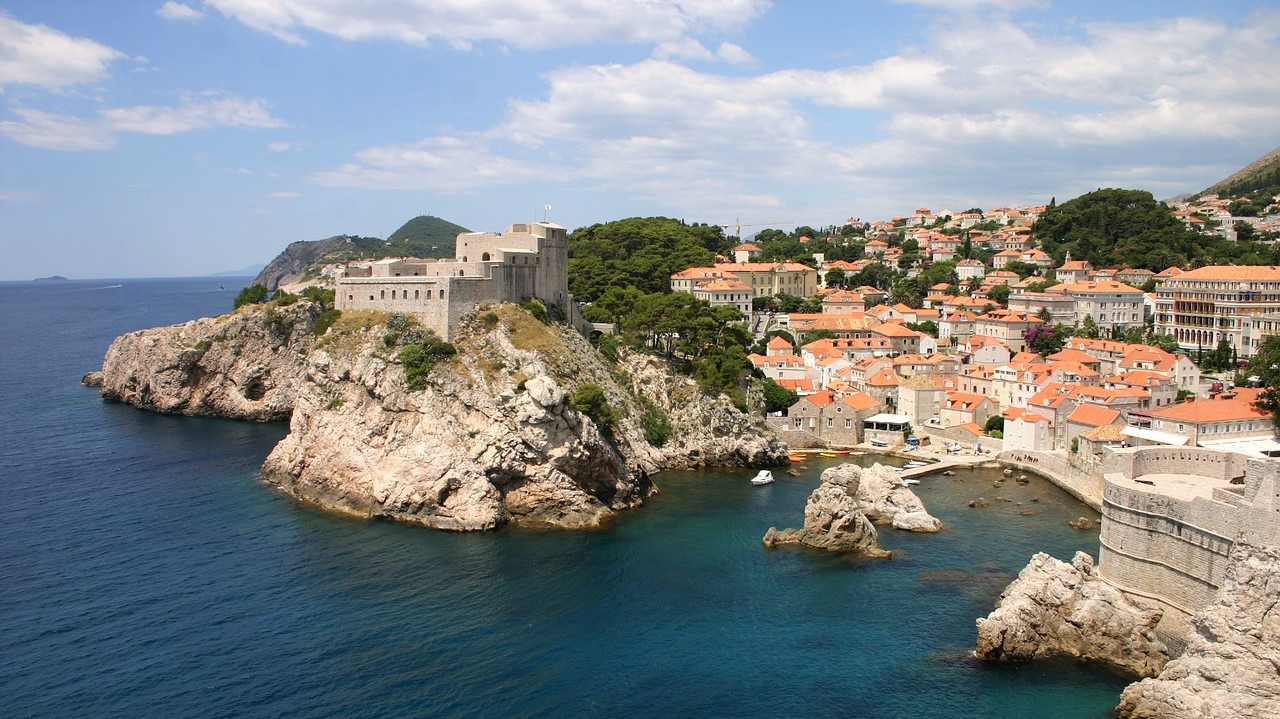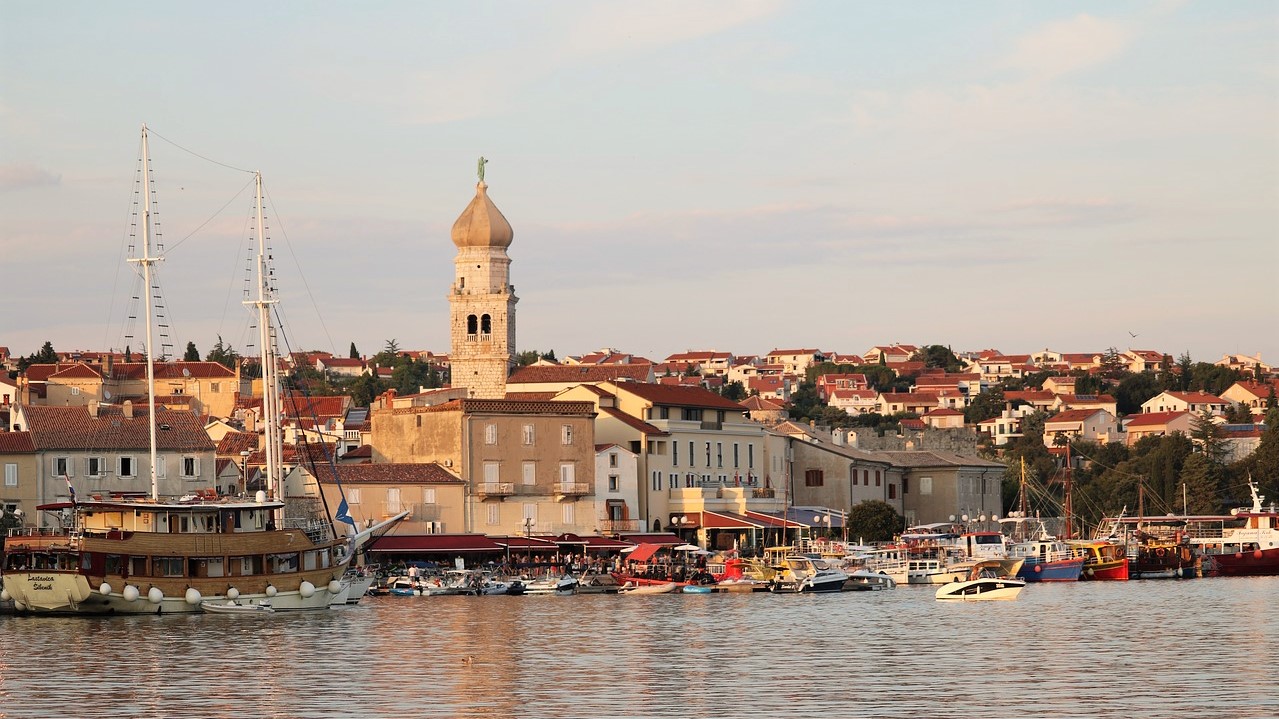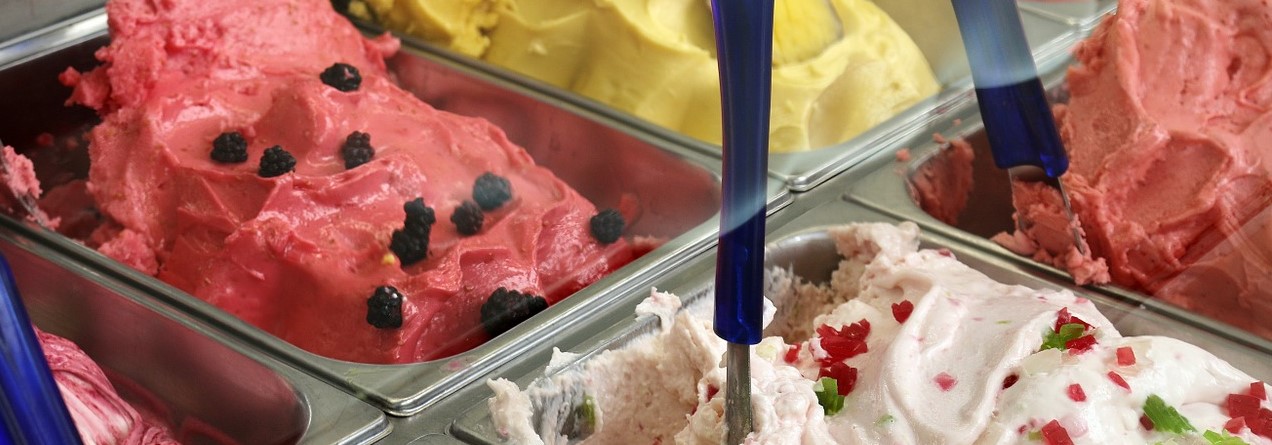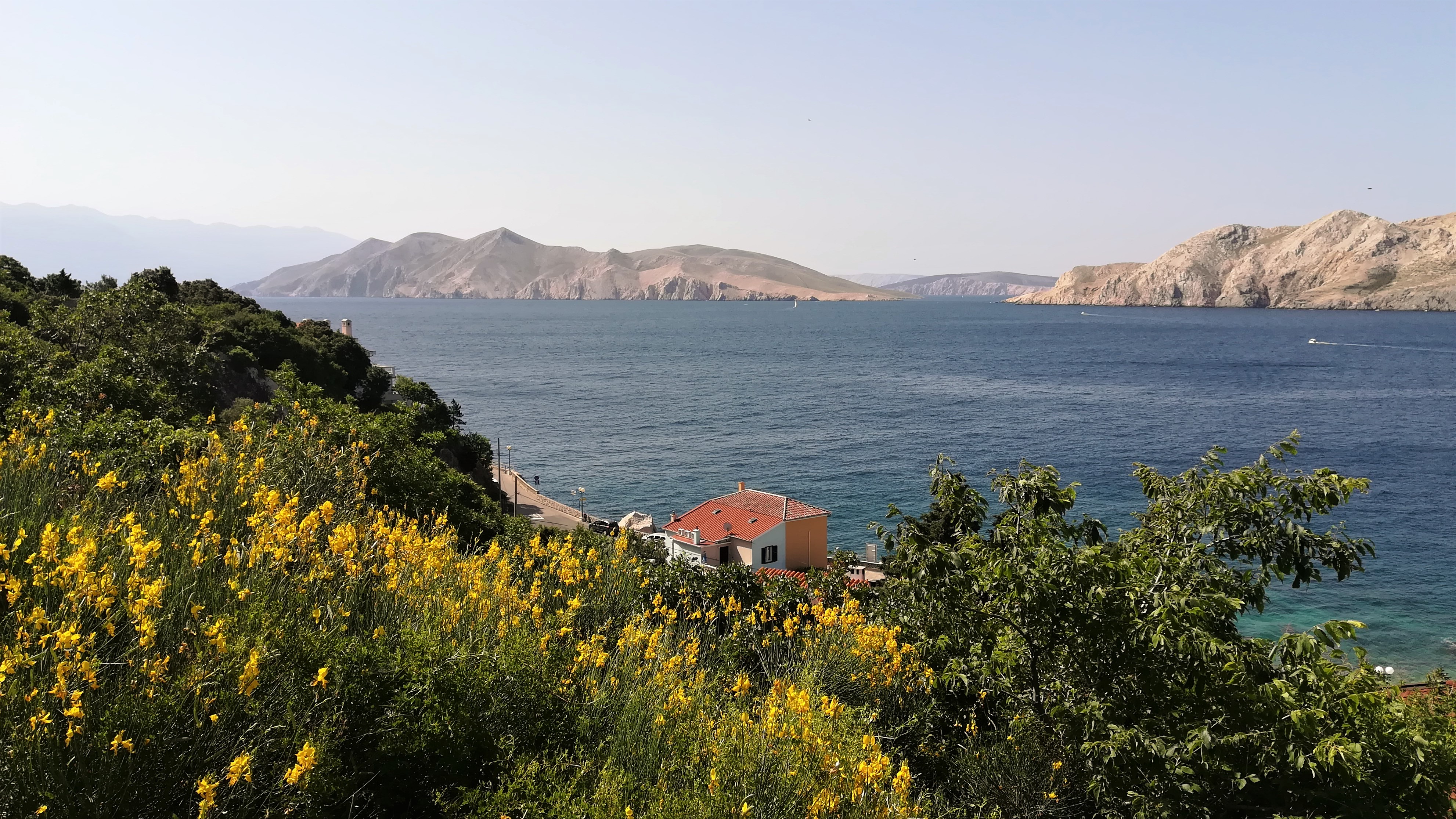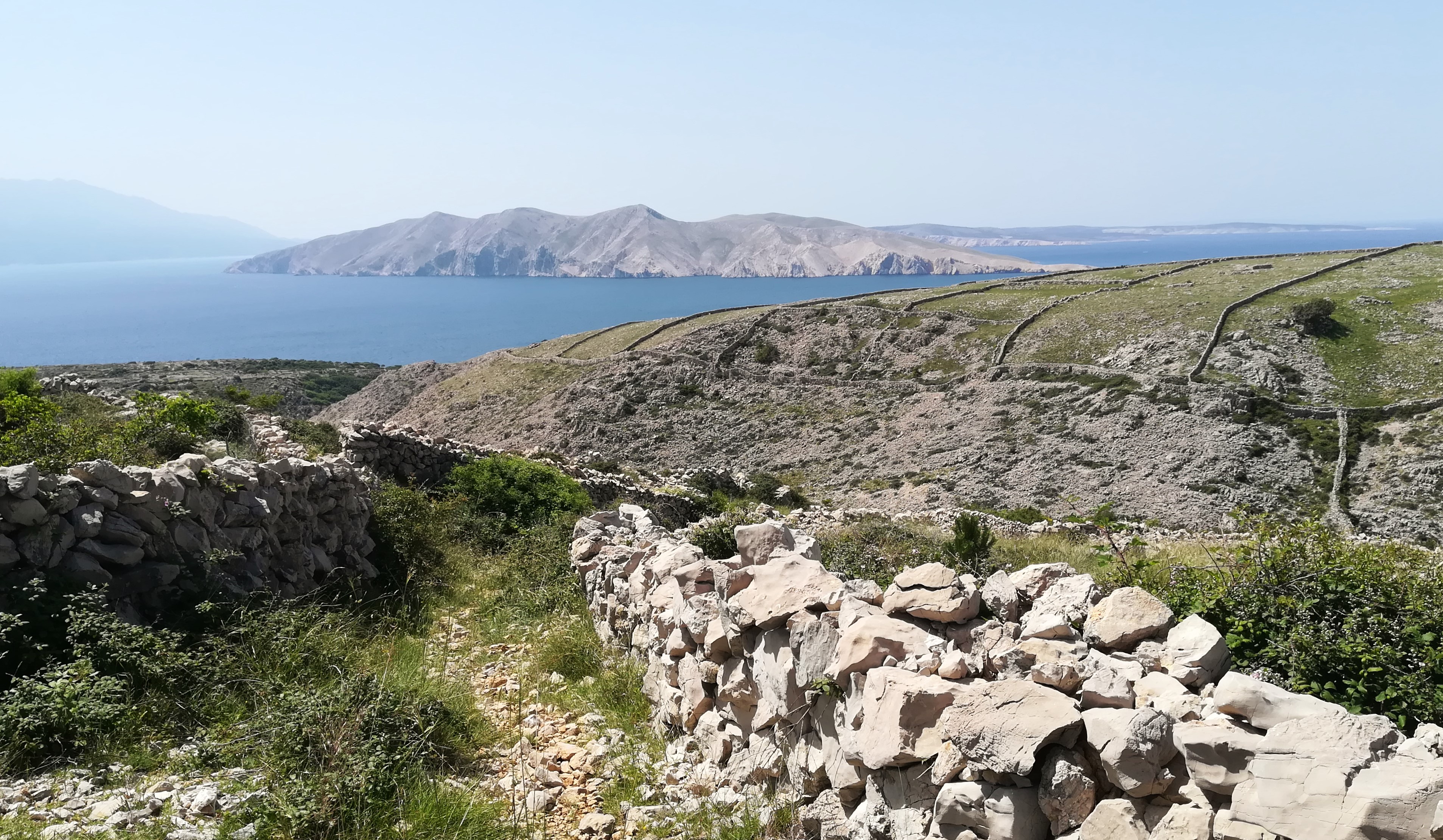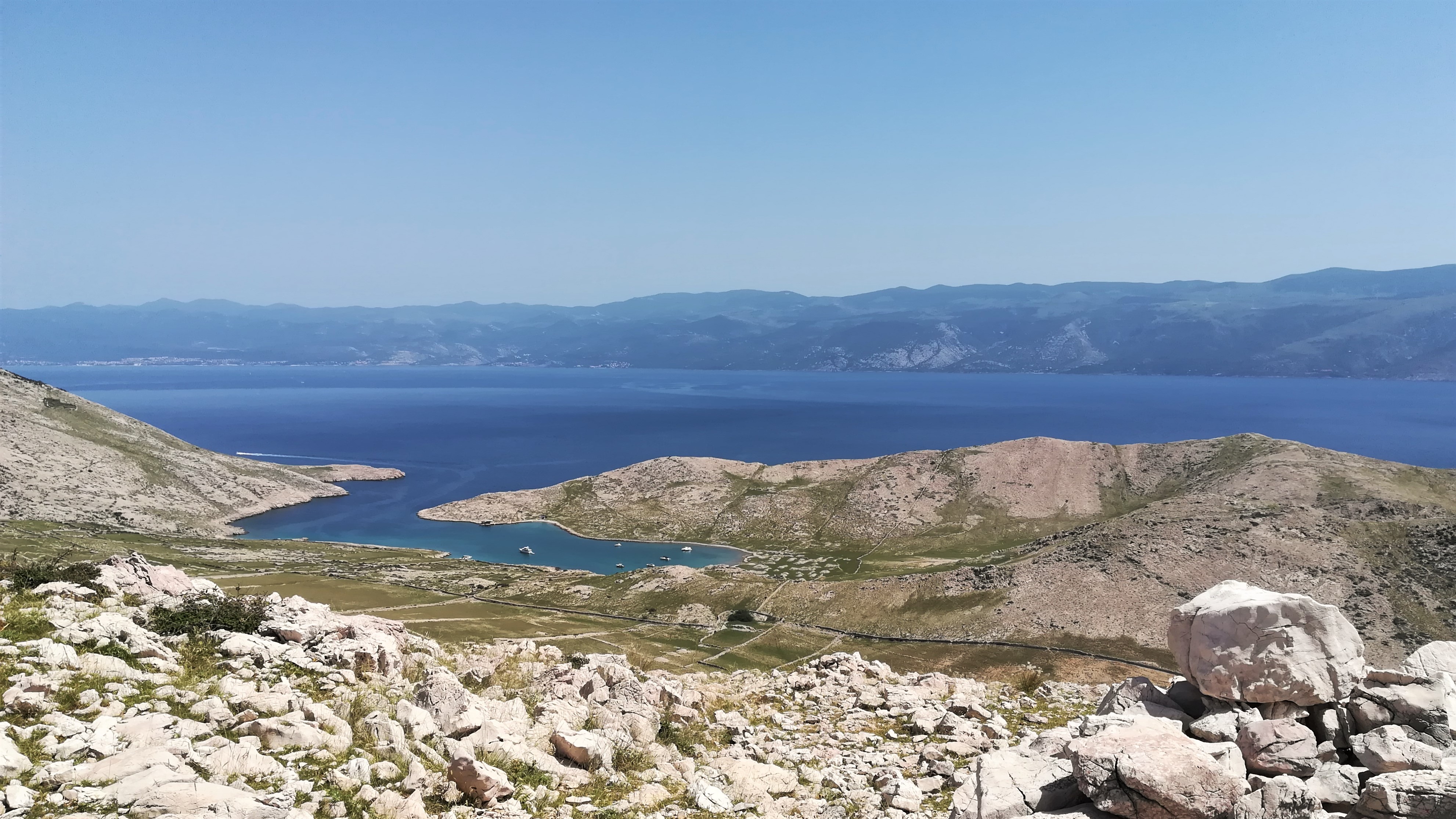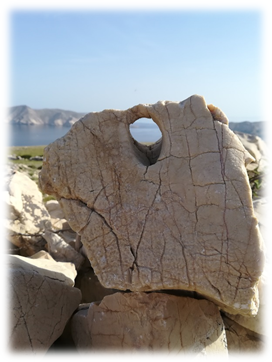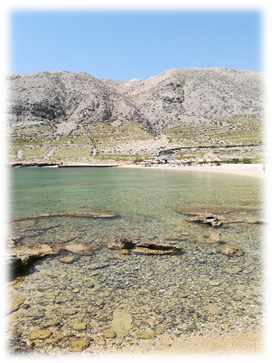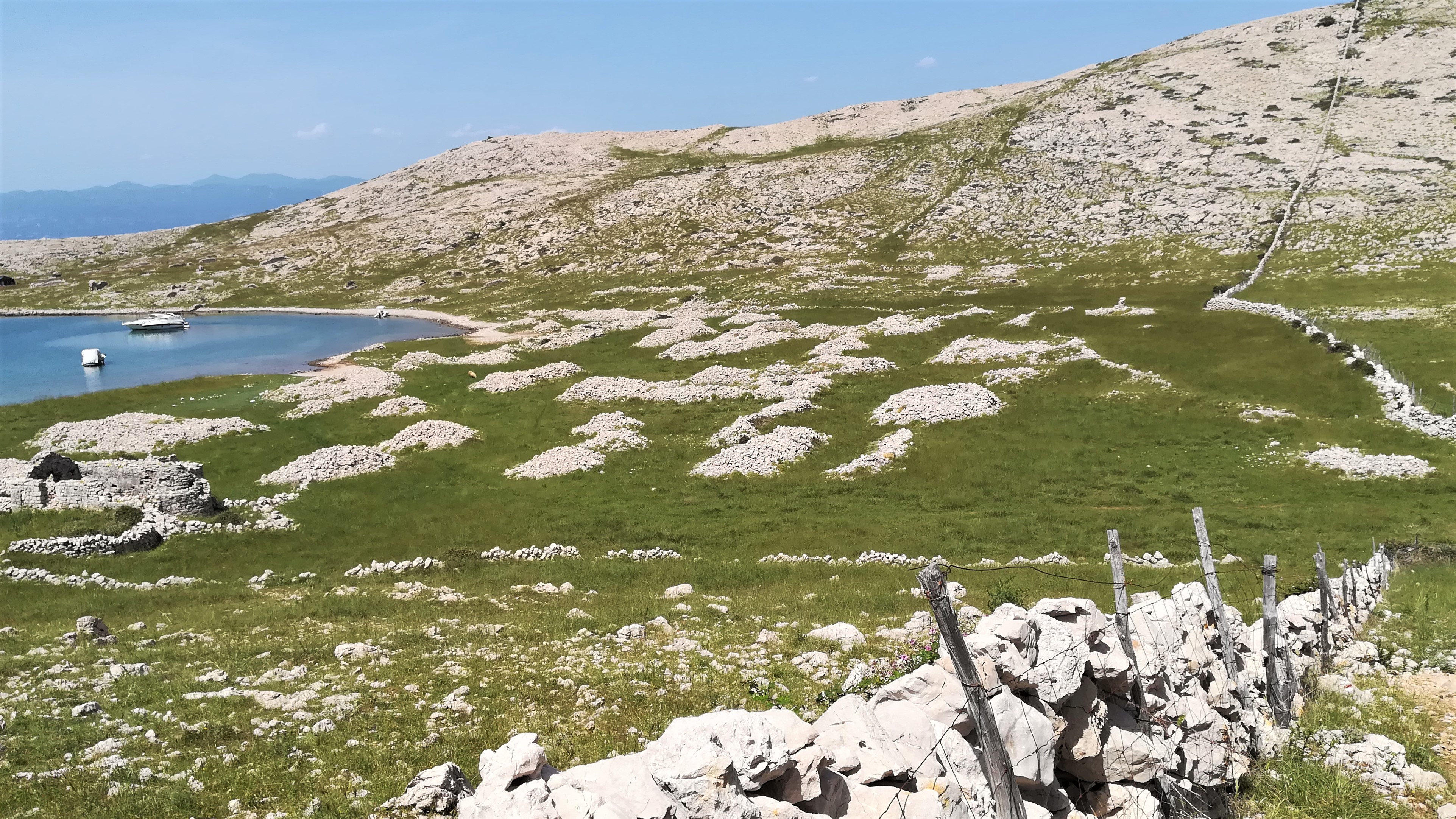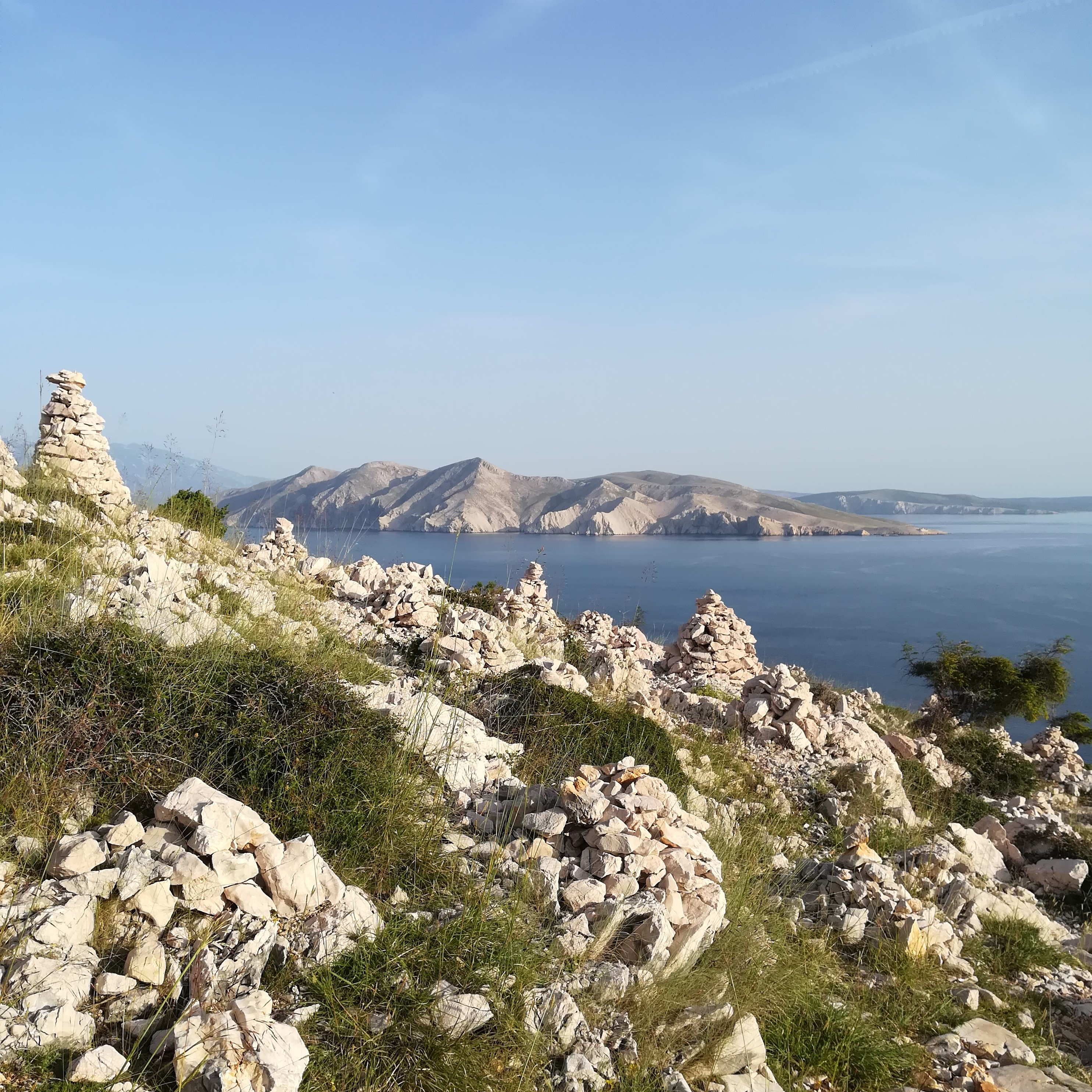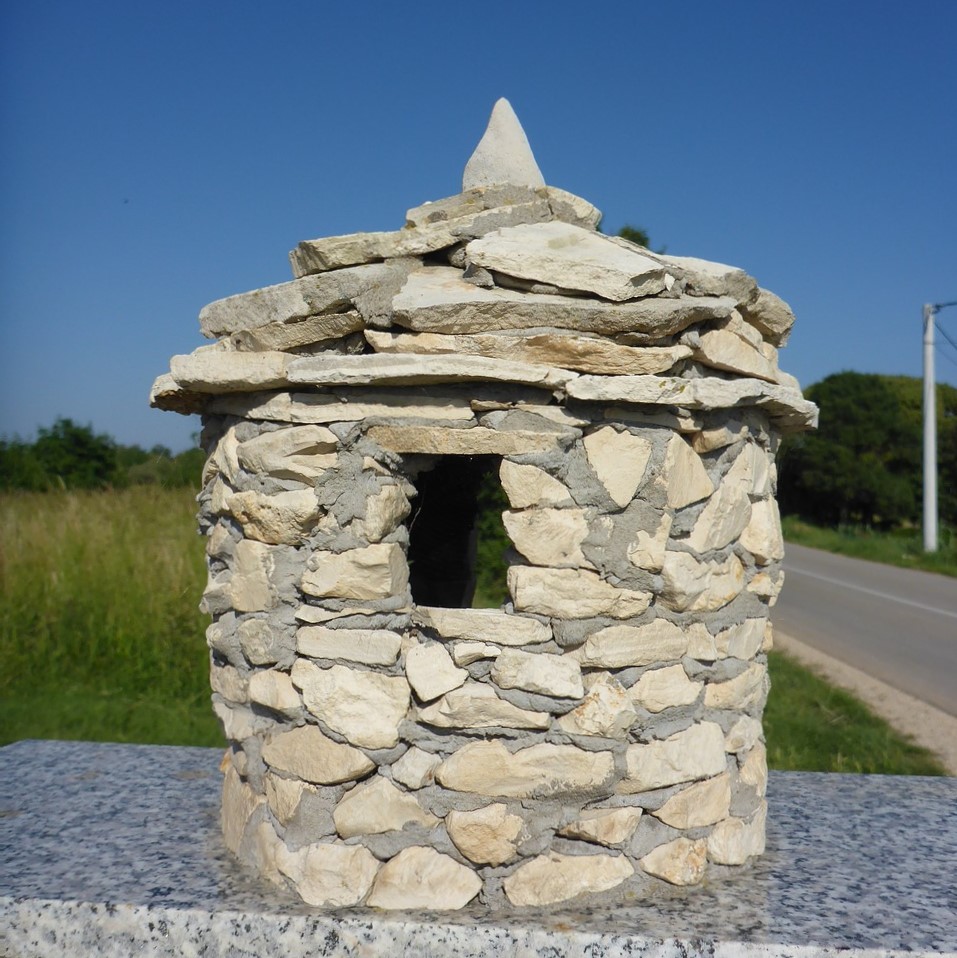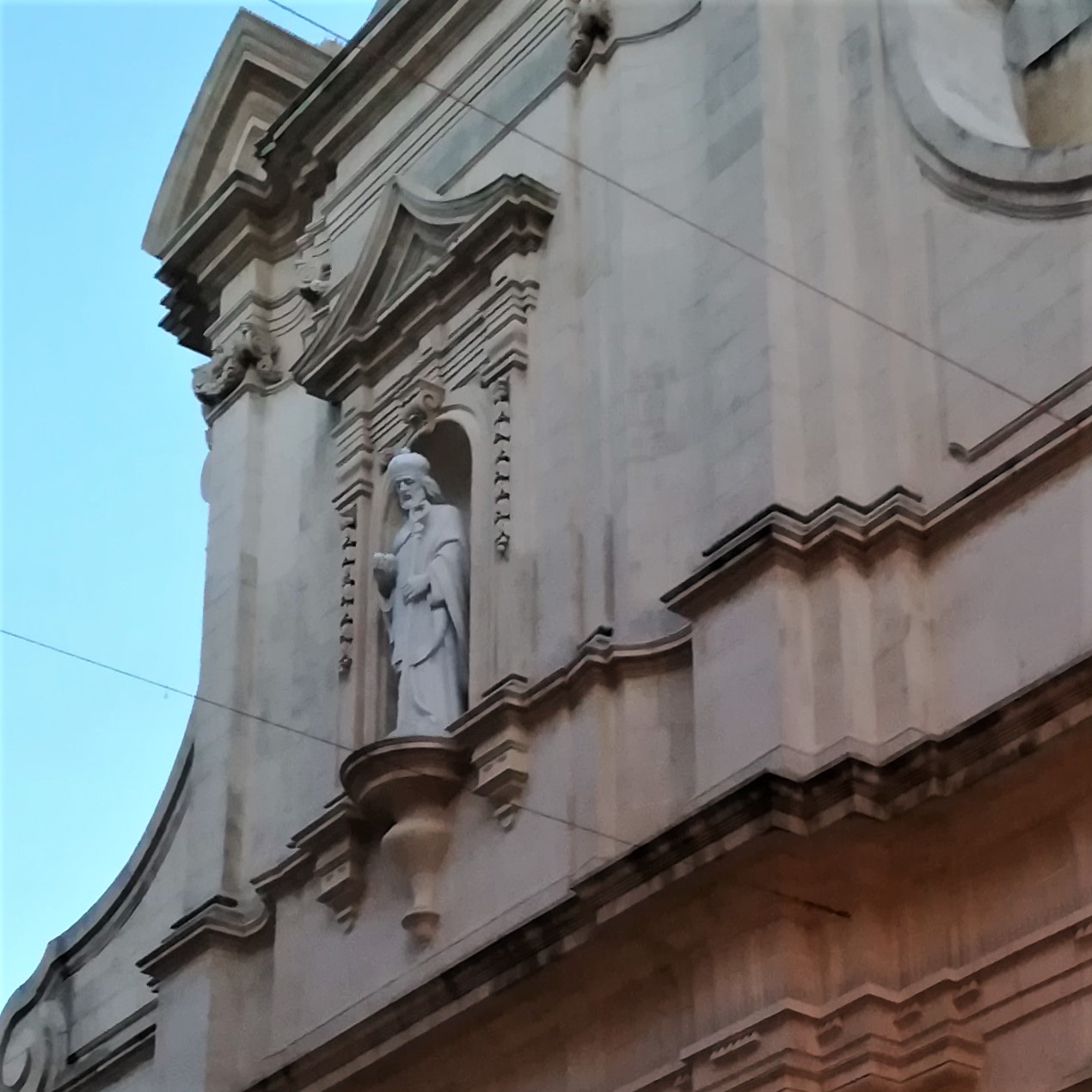I wrote this tour for my elementary or pre-intermediate readers, so you will understand this if you studied about half or one year of English. It will guide you in the old-town and give you some information about the early history of the town of Krk.
I used http://krk.rijekaheritage.org/en when I read about the history of Krk. You can click on all the places on their homepage, and their map will show you where the places are. I will also share a map from a yearly guide to Krk island, which you can find on page 25 of the English booklet for 2019 here, http://info.krkstory.com/ Happy strolling!
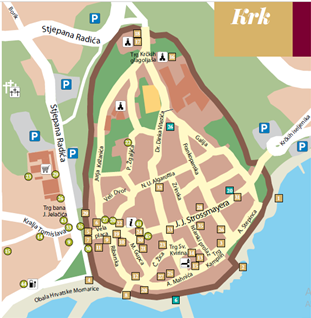
First, walk to the Polygonal Tower near the seaside.
- While you are walking there, you can see the walls of the city. They are really special, because some parts of it are more than 2000 years old. The first people who started to build them lived here before the Romans. But the first “document” that you can read today about the building of the wall is from the 1st century before Christ. You can see it, an ancient stone with Latin words, in the Frankopan castle. Don’t forget to look for it later, if you go inside! Some specialists say that Antonius, the person who led Caesar’s army, had to stay on the island for a time, because Pompeius attacked them on sea. Maybe that was the time when Antonius ordered to build the walls of the city.
However, the stones that you can see today, are mostly from the 14th and 15th century. A typical thing about that age was the shape of the top of the walls. It is called a crown, and it was built in the age of firearms, so man could fire from and then hide behind the top of the wall.
There were always a lot of towers and gates in the walls. You will see two towers and two gates during this walk.
ancient: really old, from a very early time in history
lead, led, led: https://www.collinsdictionary.com/dictionary/english/lead
attack: to go against a city or country with an army
order: to tell somebody to do something, for example, a captain to his people on the ship
firearm: for example, a pistol or another gun, something that works with gunpowder
- The Polygonal Tower
This tower is special because it has six sides – this means that it is hexagonal. It was built in the 15th century, but there is a Roman stone in its side, about 5.5 metres high up. It is a tombstone of a couple. They died around the year 40 after date (AD), and you can see their figures in the middle.
The tower is not very high today, but it was higher in the past. It also had a crown, and its name was Torre di Barbuglia or the “bearded tower”. (The beard is the hair that grows on a man’s face.) The men who served in this tower were called the Barabands, they were soldiers with beards, and they fought with guns. They served in other castles in Croatia, too.
tombstone: a stone with a dead person’s name in a cemetery
fight, fought, fought: to combat, to use physical power to confront somebody

Now, enter the old-town through the small gate, and find the Templum Veneris store on the corner, on the left, in front of you.
- The Temple of Venus
You will have a very interesting experience here. If you enter the souvenir shop, you will see the ruins of a Roman temple under glass floor. It is from the first century before Christ, and it was a temple of Venus, the goddess of love. Could you enter? Did you buy something? Please, comment at the end of the article! Now walk to number 7 on Ribarska street and see the …
- Triton Mosaic
Inside this house, you can find a mosaic floor from Roman times. It was probably a private room of the city bath. The picture shows a celebration under the sea. Triton was the son of Poseidon, the sea God. He had a fish tail and a human body. He is one of the figures in the mosaic. The other figure is a special creature; it’s called ichtyocentaur. It is a special kind of centaur with a fish tail again. It has a wine container in its hand, a kantaros. There is a third figure, too, but we can’t see it fully. It was probably Pan, the son of Hermes, and he had a flute in his hand. The flute and the wine holder show us that they were having a really good time!
tail: the long body part at the back of a dog, for example
creature: a special kind of person or animal or a figure from mythology
- From the Triton Mosaic, you can take a walk to the centre of the Roman city. It’s at the crossing of Dr. Dinka Vitezica and Strossmayera street. Today, it is only a crossing. But around the first century before Christ, it was the marketplace. It was at the crossing of the 2 main streets of the city: one built East-West and the other one built North-South. The Romans always built their cities this way. The centre of the human body is the belly button; the centre of the city is this square at the main crossing. So they called this place umbilicus, which doctors still use in Latin to name the belly button of a person.
belly button: the centre of a person’s belly or stomach area, it is small and round
- Now you can walk down Dr. Dinka Vitezica street and walk slowly past Trg Sv. Kvirina. There you can see the two main churches of the old-town. You cannot see it today, but there was a Roman bath in the place where the churches are today. Some mosaics can still be found under the churches.
It was quite big, it had three main pools and some private rooms, too. The Roman baths always had a tepidarium with naturally warm water, a caldarium with very hot water, and a frigidarium with very cold water. They always took baths in these pools in this order.
They used the baths for a lot of things. Firstly, they came together here. Then, baths became places of entertainment. And last, they became religious places. So in the 4th century, the people of the city built an oratorio in the place of the bath and a basilica in the 5th century after that. And now, you can still see beautiful churches at the same place.
order: the way you put things one after the other
entertainment: for example a show that you enjoy or a concert or a theatre play
religious place: a place where you go to love and think about your God
When the street ends, turn left, and walk to Kamplin square.
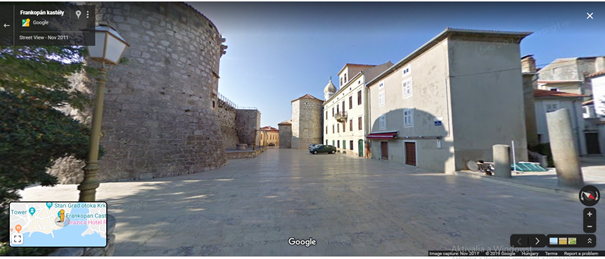
(The Square Tower is far away on the left side, the Roman columns are on the right side.) - This square has an interesting name. There are two ideas about it. First: its name could mean “field” in Latin (campus), and maybe the Roman soldiers practised here. Second: its name could come from Italian, from the word campanile – bell tower.
Historians say that the square tower of the castle maybe had a bell in the Middle Ages because the cathedral didn’t have one. They rang the bell for religious celebrations and also when there was some danger. Those times the people of the town could go inside the castle to be safe.
If you look around the square, you can see some columns on the side of it. They are from the Roman times too. But if you go inside the castle, you can see a lot more interesting things.
square: a shape which has four = sides and they close a 90 degree angle
column: the long, vertical things which hold the building and the roof in one place
- The Frankopan Castle
The best thing when you go inside the castle is the view – I absolutely agree. Walk along the walls and take your wonderful photographs!
After this, go to the middle of the yard and look around. If you turn north, you can see 4 “holes” or niches in the side of the castle wall. In one of the niches, you will find the first ever “document” that mentions the building of Krk. It’s a stone inscription (=writing) that talks about two Roman builders who worked on the first walls of the city when Antonius was here. (You know, he was the lover of Cleopatra after Caesar.)
If you turn around and look at the wall again, you can see some special tombstones from the 1st century before Christ. These stones are called Liburni Cippuses. They are called Liburni because they all come from the territory of ancient Liburnia. In Croatia, specialists found more than 100 cippuses, 14 on Krk island. If you want to see some more of them, you can go back to the main gate, and find Volsonis Restaurant. There are four cippuses inside there. You can see that their shape is very special. Generally, they were decorated, but the ones on Krk are very simple. The person who payed for these expensive and monumental tombstones usually put their name on it, the name of the dead person that they wanted to remember, their relationship (family or friend), the time of the death and the job of the dead person. Specialists think that the cippuses were a status symbols because of their seize.
This is where my Roman tour ends, and my medieval tour begins. I only wrote about the parts of the castle here which are from ancient times. But you can go on and read my next tour if you want to know more about the later history of Krk. I will post a link here next week.
Thank you for reading this writing, I hope you learnt a lot from it, English and history, too. If you did this tour, please, comment at the bottom. Did you find something that was different? Don’t forget to share it, other people can use the information later.
If you want to learn the words better, then make a list of them for yourself now. Learn them, and after that, you can do this exercise:
Put the right word in the right sentence.
- The right ………… of the letters in the alphabet is a, b, c, and so on.
- The Turks ………… Hungary in the 16th
- The church is a ………… building.
- If a person dies, the family usually buys a ………… for them in the cemetery.
- Oh no, you closed the door on the cat’s ………… .
- There are many kinds of ………… on the seaside, I’m sure it won’t be boring.
- A good boss ………… the company in a professional way.
- Our dining table is ………… but our coffee table is round.
- The Austrians ………… together with the Hungarians against the Turks.
- The Hungarian National Museum has very high ………… in front of the entrance.
Which ones didn’t you use? Can you find them? Have fun!
